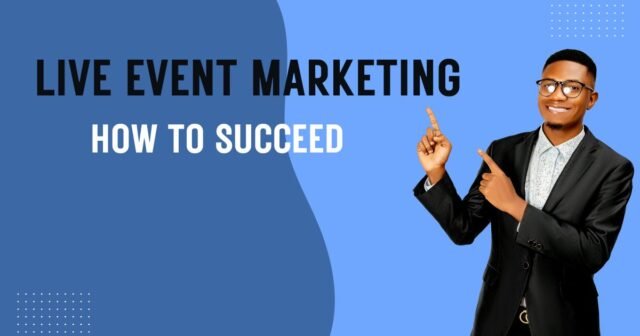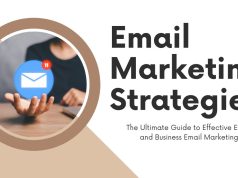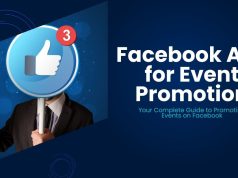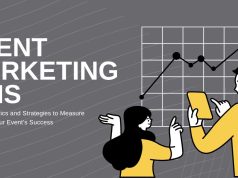Live events are more than just gatherings; they are an opportunity to create memorable experiences, connect with your audience on a personal level, and amplify your brand message. The phrase “live event marketing” has gained significant momentum in the world of business promotion, and for good reason. From small meetups to massive conferences, incorporating live events into your marketing strategy can dramatically boost brand awareness, create meaningful customer relationships, and drive sales.
But live event marketing is no walk in the park. It requires meticulous planning, strong execution, and a clear understanding of your goals. This blog will guide you through everything you need to know to plan, execute, and optimize successful live event marketing campaigns.
By the time you finish reading, you’ll have a comprehensive understanding of how live event marketing works, why it’s effective, and actionable steps to implement it successfully for your brand.
What is Live Event Marketing?
Live event marketing involves hosting or participating in in-person or virtual events to promote products, services, or your brand. These events can range from trade shows, workshops, and pop-ups to large-scale conferences or webinars. The key factor is creating an interactive experience that engages attendees while seamlessly incorporating your brand message.
The value proposition of live event marketing is clear. Unlike digital ads, it enables face-to-face or real-time interaction, leaving a lasting impression on your audience. Whether you’re providing hands-on demonstrations or fostering community through real-time engagement, live events grant your brand the opportunity to stand out.
Why Live Event Marketing Works
The modern consumer craves experiences more than transactions. According to a study by Eventbrite, 78% of Millennials would rather spend money on an experience than on an item. Live events tap into this shift in consumer preferences by creating moments your audience can connect with emotionally.
Some key benefits of live event marketing include:
- Stronger brand connection: Direct engagement fosters loyalty and trust.
- Lead generation: Engage with attendees who are genuinely interested in what your brand offers.
- Audience insights: Real-time interaction provides invaluable feedback and data.
- Brand visibility: Events help you stand out in a crowded digital landscape.
Types of Live Event Marketing
There isn’t a one-size-fits-all approach to live event marketing since it is a highly versatile strategy. Here are some event types your business may consider integrating into its marketing strategy.
1. Trade Shows and Expos
Perfect for B2B brands, trade shows allow you to showcase products or services to potential clients, network with industry professionals, and gain exposure.
2. Conferences
Hosting or sponsoring a conference positions your brand as an industry thought leader. Share insights, provide enriching value, and network with a room full of professionals who align with your brand.
3. Workshops and Educational Sessions
Interactive and collaborative, workshops cultivate a stronger connection to your product or service. Offering real-world applications during these events helps demonstrate your value.
4. Product Launch Events
Create buzz around a product launch by showcasing it in an engaging, experiential event. Give attendees an exclusive first look while generating anticipation online through media coverage and social sharing.
5. Pop-Up Events
Temporary and unexpected, pop-up events surprise and delight local audiences. Perfect for retail brands or promotions, pop-ups are designed to create hype quickly.
Key Steps to Master Live Event Marketing
Executing live event marketing successfully takes more than just booking a venue and sending out invitations. Below are six actionable steps to ensure your event is both memorable and impactful.
1. Define Your Goals
Start with a clear objective for your event. Are you highlighting a new product? Generating leads? Building brand awareness? Well-defined goals align your planning efforts and help measure your success post-event.
2. Understand Your Target Audience
Tailor every element of your event to your audience’s preferences and needs. From the theme and content to the activities, knowing your audience allows you to deliver a meaningful experience that resonates with them.
3. Choose the Right Type of Event
Select an event type that achieves your goals and aligns with your audience. If you’re targeting professionals, a conference may be ideal. For local consumers, a pop-up might work better.
4. Promote Your Event Strategically
Promotion is key to getting attendees through the door. Use a mix of marketing channels for your pre-event promotion, including social media, email marketing, and paid ads. Consider offering early bird registration or exclusive perks to drive conversions.
5. Focus on Creating an Engaging Experience
While content and activities are important, the overall vibe of your event plays a huge role in its success. Create opportunities for interaction, whether through Q&A sessions, live demos, or networking lounges. Use branded backdrops and creative photo opportunities to maximize social media sharing.
6. Follow-Up Post-Event
Your relationship with attendees doesn’t end once the event is over. Send thank-you emails, share content from the event, and engage attendees on social media to build stronger connections and keep your brand top-of-mind.
Examples of Live Event Marketing Done Right
1. Apple’s Product Launch Events
When Apple announces a major product launch, the world listens. With sleek visuals, in-depth product demonstrations, and an exciting sense of exclusivity, the tech giant nails live event marketing every time.
2. Red Bull’s Extreme Sports Events
By hosting spectator-thrilling events like the Red Bull Air Race, the brand aligns itself with adrenaline and excitement while creating memorable experiences that amplify brand loyalty.
3. Sephora’s Beauty Classes
Sephora offers free beauty workshops at its stores, blending education, hands-on demonstrations, and product sampling. These events build community and give attendees a firsthand look at Sephora’s products in action.
Measure the Success of Your Live Events
To ensure your efforts are worthwhile, track KPIs like the following after your event concludes:
- Attendance rates (and how they compare to registration)
- Social media engagement (mentions, hashtags, shared photos, etc.)
- Leads generated (sign-ups, email captures, etc.)
- Audience feedback (collected through surveys or conversations)
Analytics not only help measure success but also inform future event strategies.
Transform Your Brand with Live Event Marketing
Live event marketing is a powerful way to connect with your audience, tell your brand story, and stand out in a competitive market. Whether you’re hosting a product launch, sponsoring a conference, or popping up in your local community, live events create authentic experiences that resonate far beyond the showroom floor.
Are you ready to integrate live event marketing into your strategy? Start by identifying your goals, understanding your audience, and creating an experience they’ll never forget.
Want more tips and strategies on live event marketing? Check out our exclusive resources and learn how to take your brand to the next level.









